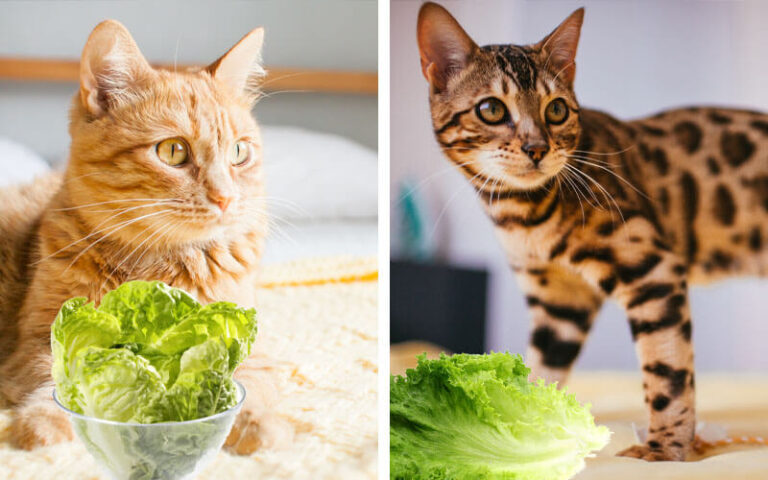How Many Cats Roam Our Planet? A Deep Dive into the Feline Footprint
Whether you’re a lifelong feline aficionado or just intrigued by the quiet mystery of a cat’s gaze, one question captures the curiosity of animal lovers and researchers alike: How many cats roam our world today? The answer isn’t just a number—it’s a story that spans millennia, continents, and cultures.
From humble beginnings in ancient deserts to cozy corners of modern living rooms, the cat (Felis catus) has evolved from wild predator to purring companion. But cats—domestic and wild—aren’t just passive pets. They are ecological participants, cultural icons, and, in some cases, even environmental disruptors.
Let’s unravel the astonishing global journey of our whiskered friends and understand their impact—emotionally, ecologically, and statistically.
Contents
- 1 🌍 So, How Many Cats Are There in the World?
- 2 🐾 What is a Cat, Really?
- 3 🌆 Where Do Cats Live? From Alleys to Amazon
- 4 ⏳ Origins & Evolution: From Predator to Pet
- 5 🧭 How Did Cats Spread Globally?
- 6 📉 The Other Side: Overpopulation and Environmental Impact
- 7 🇺🇸 Cat Ownership Trends: Who Loves Cats the Most?
- 8 🧬 A Closer Look at Breeds, Behavior & Diversity
- 9 🛠️ Cats in Crisis: Emergency Preparedness for Pet Owners
- 10 Endangered and Extinct: The Wild Cats We’ve Lost—or Could Lose
- 11 📊 Cat vs. Dog: Who Wins the Numbers Game?
- 12 🎭 Cats in Culture: Symbols of Luck, Mystery & Independence
- 13 🧡 Why We Love Them: The Emotional & Psychological Bond
- 14 🌐 The Feline Footprint: Final Thoughts
- 15 Cat Populations Around the World: Regional Variances and Trends
- 16 The Top Cat-Populated Countries: Where Felines Reign Supreme
- 17 The Allure of Cats: Reasons Behind Their Popularity as Pets
🌍 So, How Many Cats Are There in the World?
Globally, it’s estimated that over 600 million to 1 billion cats inhabit our planet.
- 🏡 Pet Cats (House Cats): ~220 million
- 🐾 Feral & Stray Cats: ~480–800 million
- 🐅 Wild Felids: Numbering in the tens of thousands per species, often endangered
These figures fluctuate based on pet ownership trends, breeding, feral colony growth, and environmental changes.
🐾 What is a Cat, Really?
Scientifically speaking, cats belong to the Felidae family, a taxonomic group (hypernym) that includes both domestic cats and larger wild felines like Panthera leo (lions) and Panthera tigris (tigers). The domestic cat’s species, Felis catus, is a polysemous term—it represents both a biological classification and a beloved household companion.
Lexically, cats are often associated with terms like feline, kitten, mouser, and purring pet. Semantically, they evoke connotations of grace, independence, mystery, and affection.
Some of their common attributes include:
- Retractable claws
- Acute night vision
- Flexible spine
- Exceptional balance
- Distinct vocalizations (like the polysemous “meow”)
Their rare attributes? A homing ability that’s still not fully understood, and a unique hunting gait known as “direct registering”, where back paws land precisely in the prints of the front paws.
🌆 Where Do Cats Live? From Alleys to Amazon
Cats have successfully colonized every continent except Antarctica. Their holonyms (larger systems they belong to) include urban ecosystems, suburban neighborhoods, and even remote islands. As meronyms (parts of environments), they might occupy rooftops, alleyways, forests, barns, or living rooms.
Their habitats range from:
- Apartment complexes and farms (domestic cats)
- Dense forests and savannas (wild cats like lynxes and ocelots)
- Coastal towns and industrial zones (feral colonies)
Cats’ environmental plasticity—their ability to adapt physiologically and behaviorally—makes them one of the most widespread mammalian carnivores.
⏳ Origins & Evolution: From Predator to Pet
The domestic cat’s lineage traces back around 9,000 years to the African wildcat (Felis lybica). Early human settlements in the Fertile Crescent benefited from their rodent-hunting skills, triggering mutual cohabitation.
In Ancient Egypt, cats were deified and mummified, aligning them with gods like Bastet. Etymologically, the word “cat” stems from the Latin cattus, which is related to the Nubian word kadis—showing how their cultural presence spread through trade and language.
🧭 How Did Cats Spread Globally?
The great feline migration paralleled human exploration. Cats boarded ships as pest controllers and soon found homes in Asia, Europe, and the Americas. Colonization, trade routes, and immigration helped disperse different breeds and feline populations, altering ecosystems in the process.
📉 The Other Side: Overpopulation and Environmental Impact
While cats offer emotional support, companionship, and even stress reduction, their unchecked populations—particularly feral and free-roaming cats—pose a dire threat to wildlife.
Ecological concerns include:
- Predation on native bird and small mammal populations
- Disruption of local food chains
- Spread of zoonotic diseases like toxoplasmosis
Population management through TNR (Trap-Neuter-Return) programs and awareness campaigns is vital to balance cat welfare with biodiversity conservation.
🇺🇸 Cat Ownership Trends: Who Loves Cats the Most?
In the U.S. alone:
- 45+ million households own at least one cat
- States like Vermont, Maine, and Oregon top the cat ownership charts
- Cities like Istanbul and Rome have deep historical and cultural connections to feral cats
Globally, Russia, Germany, France, and Brazil report high feline populations, while some Asian countries are witnessing a rising cat culture, driven by urban living and the appeal of low-maintenance pets.
🧬 A Closer Look at Breeds, Behavior & Diversity
There are over 70 recognized cat breeds, ranging from the playful Siamese to the majestic Maine Coon and the hairless Sphynx. Each breed has unique temperament profiles, activity levels, grooming needs, and vocalization tendencies.
Common breed attributes:
- Hypoallergenic traits (e.g., Russian Blue)
- Polydactyly (extra toes, often seen in Hemingway cats)
- Specific vocal ranges and behavioral traits
🛠️ Cats in Crisis: Emergency Preparedness for Pet Owners
In the face of climate change and natural disasters, pet safety matters. Keep a “go-bag” ready for your feline that includes:
- Microchip & ID tags
- 3–5 days of food & water
- Comfort items & medication
- A compact litter box
Planning ahead ensures your purring partner stays safe in emergencies.
Endangered and Extinct: The Wild Cats We’ve Lost—or Could Lose
Several wild felines are on the IUCN Red List, such as:
- Amur Leopard (fewer than 100 left in the wild)
- Iberian Lynx
- Snow Leopard
- Flat-headed Cat (critically endangered)
These species are victims of habitat destruction, climate change, and human encroachment.
📊 Cat vs. Dog: Who Wins the Numbers Game?
While dogs often outnumber cats globally (~900 million dogs), cats surpass dogs in several urban environments due to their compact size and self-sufficiency. Yet, both species serve different roles—dogs as pack protectors, cats as quiet confidants.
🎭 Cats in Culture: Symbols of Luck, Mystery & Independence
From Japan’s Maneki-neko (beckoning cat) to Norse goddess Freyja’s chariot of cats, felines are woven into human mythology and folklore. Their semantically rich symbolism touches on themes of femininity, stealth, resilience, and the supernatural.
🧡 Why We Love Them: The Emotional & Psychological Bond
Cats don’t just fill homes—they fill hearts. Studies show that cat owners report lower levels of anxiety and loneliness, especially in urbanized societies. Their calming purrs are not just sweet sounds—they vibrate at healing frequencies (25–150 Hz), promoting muscle recovery and stress relief.
🌐 The Feline Footprint: Final Thoughts
So, how many cats roam the Earth?
Perhaps the better question is: how deeply have they embedded themselves into the human story?
With an estimated 600 million to 1 billion felines padding their way across alleys, jungles, and living rooms, cats are more than companions. They are emblems of adaptation, mystery, and affection—each one an ambassador of nature’s quiet elegance.
Whether curled up in your lap or stalking prey in the wild, cats remind us of the delicate balance between instinct and intimacy.
Cat Populations Around the World: Regional Variances and Trends
Cat populations exhibit regional variances influenced by factors such as climate, habitat availability, human population density, and cultural attitudes towards pets. Understanding these dynamics helps policymakers, conservationists, and animal welfare organizations develop targeted strategies for managing cat populations and promoting responsible pet ownership.
Estimating the Global Cat Population: Figures and Estimates
Accurately estimating the global cat population presents challenges due to factors such as free-roaming cats, varying ownership rates, and limited data availability in certain regions. Researchers utilize surveys, population modelling, and demographic studies to extrapolate cat numbers and trends on a global scale.
Cats do play an important role in cultures around the world, not only as pets and companions, but also as symbols of independence, mystery, and good luck. Embedding the symbol of a cat in Custom Pendants not only shows appreciation for these qualities but also reflects respect and love for the cat as a cultural totem. You can also combine cats with mascots or symbols that symbolize good luck, such as four-leaf clover and lucky stars, to add some blessings and protection.
In addition, you can choose your favorite metal material and color combination to make the pendant even more personalized and stylish. By selecting these design elements, you can create a unique and meaningful cat-themed pendant that showcases your love for cats. This custom pendant will not only symbolize your affection for our feline friends but also serve as a beautiful and eye-catching accessory for daily wear.

The Top Cat-Populated Countries: Where Felines Reign Supreme
Some countries boast large populations of pet cats, reflecting cultural preferences, urbanization rates, and socioeconomic factors. Identifying the top cat-populated countries provides insights into regional pet ownership trends and the prevalence of cats as valued companions in different parts of the world.
The Allure of Cats: Reasons Behind Their Popularity as Pets
Cats’ popularity as pets stems from their unique blend of characteristics, including independence, cleanliness, and low maintenance requirements. Their ability to provide companionship, reduce stress, and control pests contributes to their appeal as cherished members of households worldwide.
Conclusion
In conclusion, the global cat population stands at an estimated 600 million, showcasing the widespread presence of these fascinating creatures across the planet. From beloved pets in households to resilient survivors in the wild, cats continue to captivate humans with their grace, independence, and unique personalities. As we navigate the complexities of coexisting with these creatures, it remains crucial to promote responsible pet ownership and conservation efforts to ensure a harmonious balance between cats and their ecosystems. Through education, advocacy, and compassionate care, we can safeguard the well-being of cats while appreciating their valuable contributions to our lives and the natural world.
- Golden Retriever Pros and Cons: What Every Pet Parent Should Know - 15 September 2025
- Cane Corso Dog Breed: Health, Care, and Lifespan - 14 September 2025
- Catahoula Leopard Dogs: Description, Temperament, Lifespan, & Facts - 21 July 2025







